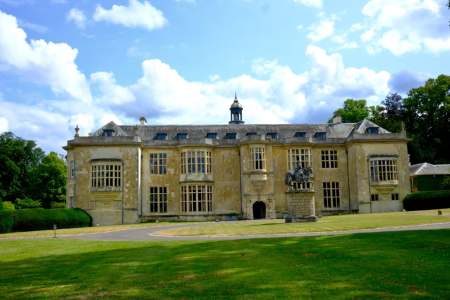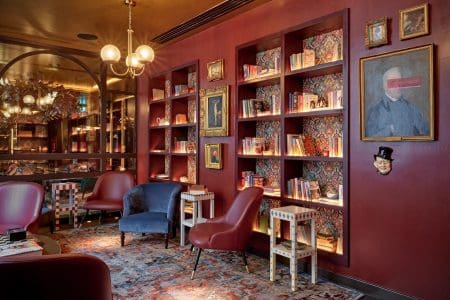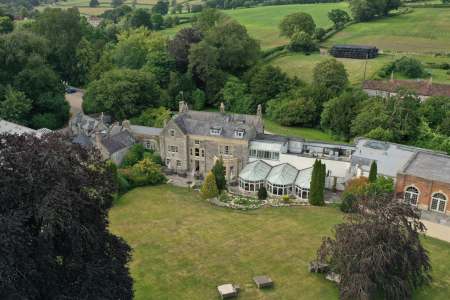Roger Hermiston and Eileen Wise revisit The Great House Hotel and Restaurant in Lavenham to experience the wonderful French cuisine as well as pop in on the Little Hall Museum.
What makes for a great restaurant experience? Excellent food may be the key ingredient, but the recipe needs much more than that. The tablecloth should be pristine white and crisp, the crockery must shine and the wine glasses gleam, and the staff ought to be charming yet discreet. It must have its very own ambience – it can be sparkling or cosseting – that captures you in its spell for the evening.
A French Connection
The Great House Hotel and Restaurant in Lavenham, Suffolk, has always met all these requirements. On high days and holidays, our families have been coming here ever since French couple Regis and Martine Crepy turned this imposing house at the summit of the village into a restaurant in the 1980s. Indeed, older family members can remember the couple first starting out as an upmarket catering company.
Over the years The Great House has been rightly garlanded with honours – including the coveted three AA rosettes, a place in the Sunday Times’s Top 100 restaurants every year since 2011, and consistent mentions in all the Good Food guides. The Crepys fused their Gallic gastronomic flair with Lavenham’s historic setting and fashioned a gem of a restaurant.

But nothing is forever. The Crepys sought pastures new three years ago, selling up and moving to Cambridge to open up a quality fast food restaurant in the city’s Grafton Centre. But the French connection did not fade, for the new owner of The Great House is Dominique Tropeano, who hails from a small country farm in Nice.
Before he bought the Great House in January 2018 Mr Tropeano was best known in the region as the owner of Colchester Zoo, having acquired it in a poor state in 1983 and subsequently turned it into one of the Europe’s finest.
A Night in Versailles
We travelled the short distance from our Suffolk home to Lavenham, not just to eat but to stay in one of the five boutique rooms the hotel has to offer and to discover how the Great House is coping with challenges thrown at it by the pandemic.
The Great House has five rooms, all named after iconic places, moments, themes in French history – Versailles, Elysee, Bastille, Montmartre and Boheme. We were placed in the largest of these, Versailles, a spacious suite at the front of the house with a grandstand view over the Market Place and all its wonky, timbered ancient houses.
No hall of mirrors here, but an attractive bedroom and sitting room in colours of purple, teal and green, the latter with a comfortable sofa and antique desk. But the highlight was a splendid four-poster bed (apparently Jacobean) that Marie Antoinette would have been happy to find space for in her Versailles palace.
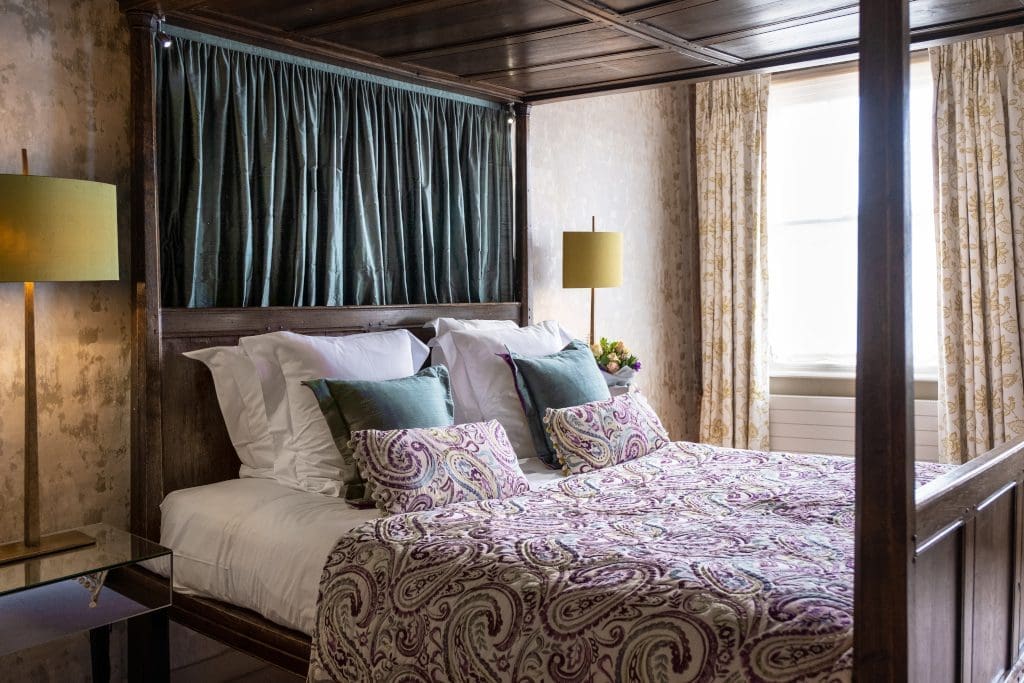
History of The Great House Lavenham
The Great House has, as you might expect, a fascinating history. The best estimate is that it was built in the late 14th century by the Caustons, a family of well-off clothiers at a time when the village had a nationwide reputation in the textile trade. Indeed, Lavenham Blue Cloth was renowned across the continent of Europe. It has been estimated that the village – despite its size – was the 14th richest place in the country by the end of the 16th century, and all the beautiful old houses that remain are testament to that wealth.
Ironically, the 300 or so medieval houses in Lavenham owe their preservation to this day in their timbered form not because of wealth, but because of poverty. When the cloth trade slumped dramatically in the 17th century the village suffered more than most, and very few owners could afford to upgrade to the new housing building material – brick.
The Great House was in fact one of the few properties in Lavenham to be modernised a little after the medieval period – hence its Georgian frontage. Inside, however, much of the old medieval house, beams and all, remains.
Into the 20th Century
Fast forward to the 20th century, and in the 1920s The Great House fell into the hands of an eccentric couple of twin brothers – Major Robert (known as John or J.G) and Colonel Thomas (‘Pum’) Gayer-Anderson. Both were art collectors and in particular noted Egyptologists, and many of their discoveries are housed at a museum named after them in Cairo. More of them anon.

Then the artistic set began to move in. In 1938 renowned photographer Humphrey Spender bought the Great House from the Gayer-Andersons for £1,200, and his even more famous brother Stephen, poet, novelist and essayist and his novel-writing wife Inez, soon moved in with him. In the war it was requisitioned by the army and used as an Officers’ Mess, but in 1953 another writer, Christopher Bush, took it over.
Bush, now largely forgotten, was a prolific and hugely popular writer of detective stories, 63 in all, published all over Europe and America, the titles of which would almost always be prefaced by ‘The Case of’ – as in ‘The Case of the Unfortunate Village (not Lavenham) or ‘The Case of the Green Felt Hat’. Bush lived and wrote at the Great House until his death in 1973.
Judy Moore bought The Great House in 1982 and now, for the first time, it became a restaurant. Then in 1985 John Spice and Regis and Martine Crepy bought it and began to introduce the French style and the French cuisine with which we are so familiar today. The first three bedrooms were opened in 1986, followed by the conversion of the attic space into two more three years later.
Modern French Cuisine at the Great House Lavenham
But it is the food that has won The Great House its reputation. In charge of the kitchen these days is Chef Patron Swann Auffray, only 26, who left his home town Nantes, in Brittany, to join The Great House team back in 2013.
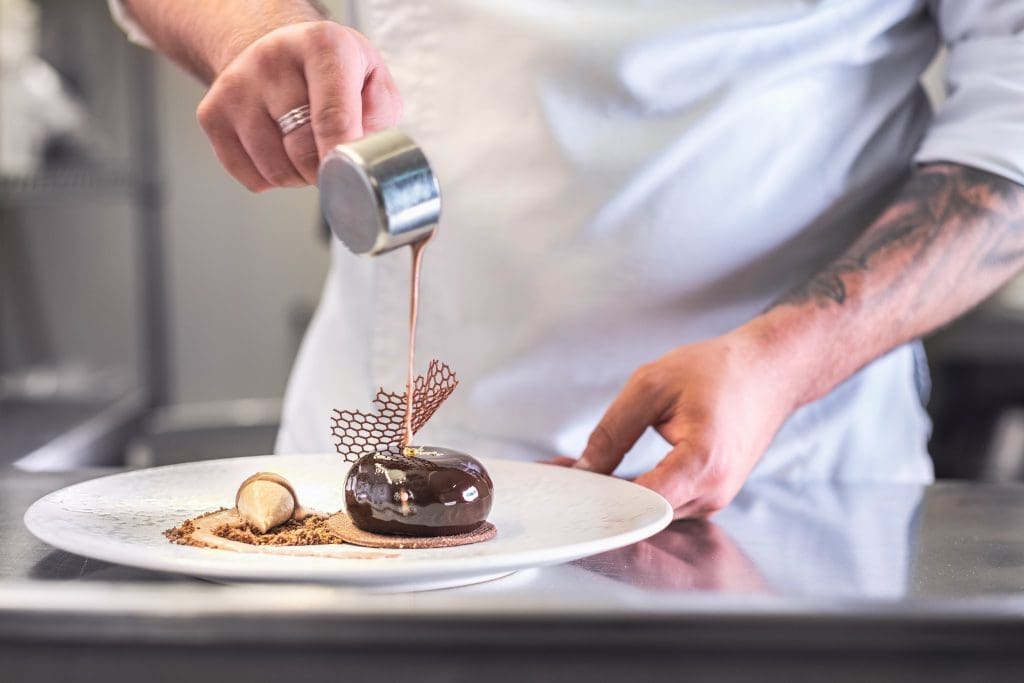
Swann’s pedigree is illustrated by the achievement of being nominated as a finalist in the 2019 Suffolk Food & Drink Awards for Young Chef of the Year. His mission is to offer modern French cuisine – ‘contrast and balance in the taste is extremely important to me’ – made from the best local ingredients. Everything has to be sourced as close as possible, so the lobster and shellfish come from Norfolk, while the skate, sea bass and (exquisitely cooked) lemon sole hail from the Suffolk coast. The meat comes from the exceptional Lavenham Butchers down the road. Only the foie gras has to be shipped from France.
Swann has never wanted to be anything other than a chef – ever since he sat down one evening, at the age of 12, and was entranced by the computer-animated comedy film Ratatouille, in which a rat called Remy dreams of becoming a chef and attempts to achieve his goal by forming a friendship with a Parisian restaurant’s rubbish boy.
Dining at The Great House Hotel
So sat on comfortable padded chairs at our favourite table – the tablecloth pure white and the crockery dazzling, as always – in the corner of the dining-room, next to the massive fireplace, we awaited Swann’s five-course Experience menu with great expectations.
Every dish would be a surprise, along with the wine accompanying it. We began with carrot mousse spiced with guacamole rocket jel, washed down with a Prosecco rosé. Then we moved onto pan-fried black butter skate wings, accompanied – amongst others – by crispy potatoes filled with parsley and potato purée, washed down with a lovely Riesling from Alsace.
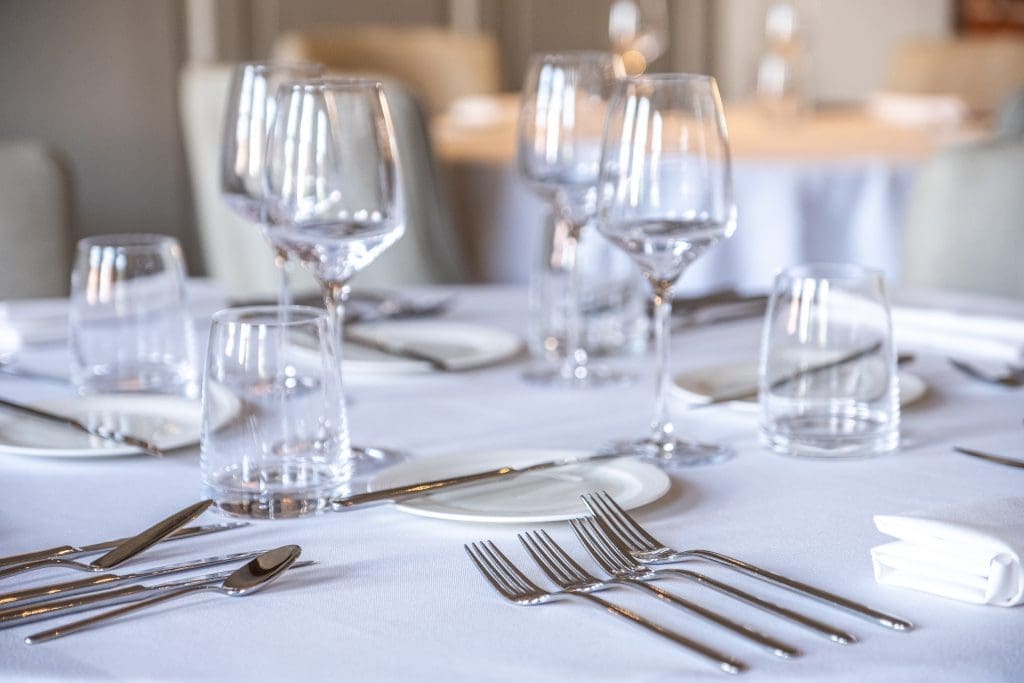
Completing the main courses was roasted Gressingham duck breast, together with black and white quinoa sautéed with citrus herbs and sweet spices, along with spicy blueberry sauce; a Pinot Noir from Maison Louis Latour provided the refreshment.
A pre-desert and desert followed – a delicious Jamaya chocolate jelly and then a Tahitian vanilla shortbread, accompanied by a Chateaux les Miaudoux from Bergerac, a lovely desert wine. We were by now full to the brim, but very, very content.
An evening at The Great House has traditionally been about travelling to a little corner of France – not just for the food, but also for the attentions of the serving staff, who over the years were always French, many of them young students over here to learn their trade in the restaurant world, or just to further their experience of life abroad.
A combination of Brexit and the pandemic has slowed the flow of French youngsters to The Great House. But on the evening we went, the largely local waiters and waitresses did an excellent job – under the watchful eye of Mr Tropeano, who floated around, helping out in the dining room.
Little Hall Museum
If you’re visiting The Great House for any length of time, it would be folly not to pop into Little Hall Museum, the medieval house next door so inextricably entwined to it, because back in the 14th century the Causton family bought them both.
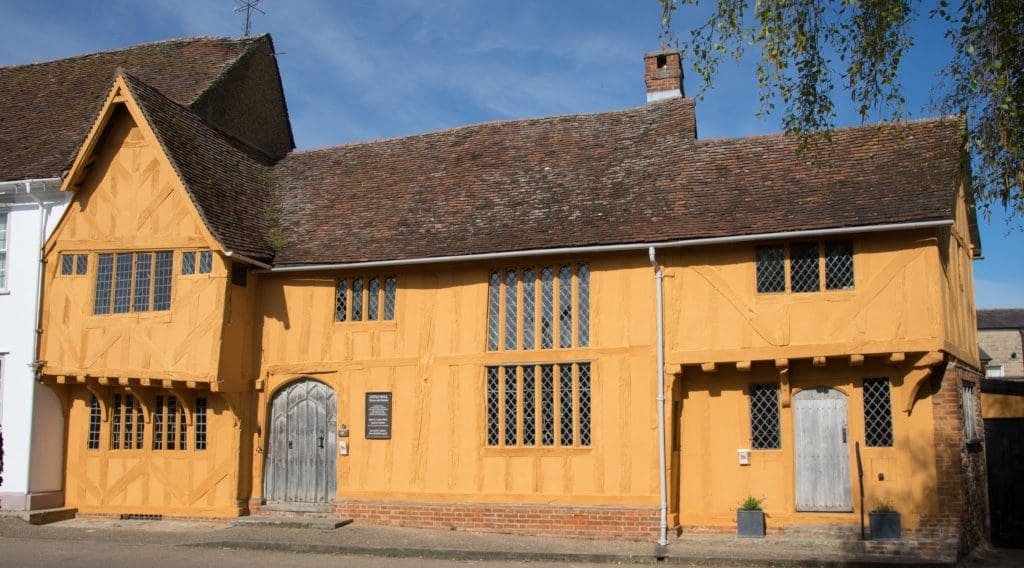
This splendid, distinctive ochre-coloured property was enlarged and improved in the golden years of Lavenham between 1425 and 1450. We know that Little Hall was subsequently ‘modernised’ in Tudor times with the addition of a fireplace and upper floor in the hall, but then it and The Great House were in all likelihood rent asunder for long periods in the following centuries.
However in the early 1920s, when they bought The Great House, the brothers Gayer-Anderson acquired Little Hall too, which had by then been divided into six rather down-at-heel cottages. The Gayer-Andersons set about returning the house to its former glory as a characterful family home, and their restoration work can be seen by the public as it is a delightful little museum owned and run by the Suffolk Building Preservation Trust.
There is an astonishingly eclectic mix of antiques, pictures, books, china and art in the seven rooms.
Take the dining room for example. The furniture includes a Georgian chair, a milking stool, Chippendale style elm chairs and a child’s posture chair designed by the surgeon Sir Astley Cooper at Guy’s Hospital in the early 19th century.
The pictures feature a Madonna and Child, said to be 14th century Italo-Byzantine, and Christmas Eve, angels appearing to shepherds with their flocks, from the (16th century) school of Jacobo Bassano. The objects include a mahogany napery press (Georgian), a cheese coaster and revolving dumb waiter from the same period, and elegant Chinese porcelain.
Robert Gayer-Anderson was given the honorary title of Pasha by King Farouk for his service to Egypt (the letter containing the award is on the wall), and here in the Little Hall is a bronze replica of his most famous discovery, the Gayer-Anderson cat representing the goddess Bastet. The original is in the British Museum.

Paintings of the austere-looking brothers adorn the walls, along with ‘life’ masks of them and their mother Mary. An oddity is a couple of stained glass paintings alongside each other on the dining room window, an unlikely combination of John the Baptist and Charles 1. The connection? We’ll leave you to work it out.
In the war the Gayer-Andersons opened the doors of Little Hall to six evacuees from Bethnal Green, East London, and their intriguing life stories, then and later, are chronicled here. The Major died in 1945 and then in June 1960, the Colonel followed him. Little Hall became a hostel for art students, presided over by the house’s guardian Reginald Brill, an outstanding artist himself, trained at Slade and winner of the coveted Prix de Rome prize for decorative painting in 1927.
Back into the street and the dazzling summer sunshine via the most enormous oak door which looks and feels like 600 years old, and onto the almost fairytale-like Market Place. The Great House and Little Hall are still a great double act, just as they always were all those centuries ago, a key part of Lavenham’s living, breathing history.
Read Roger and Eileen Reliving History at The Swan Lavenham
For more information on The Great House Hotel and Restaurant in Lavenham
Click here.
For more information on Little Hall Museum
Click here.
Main image: The Great House © Emma Cabielles
